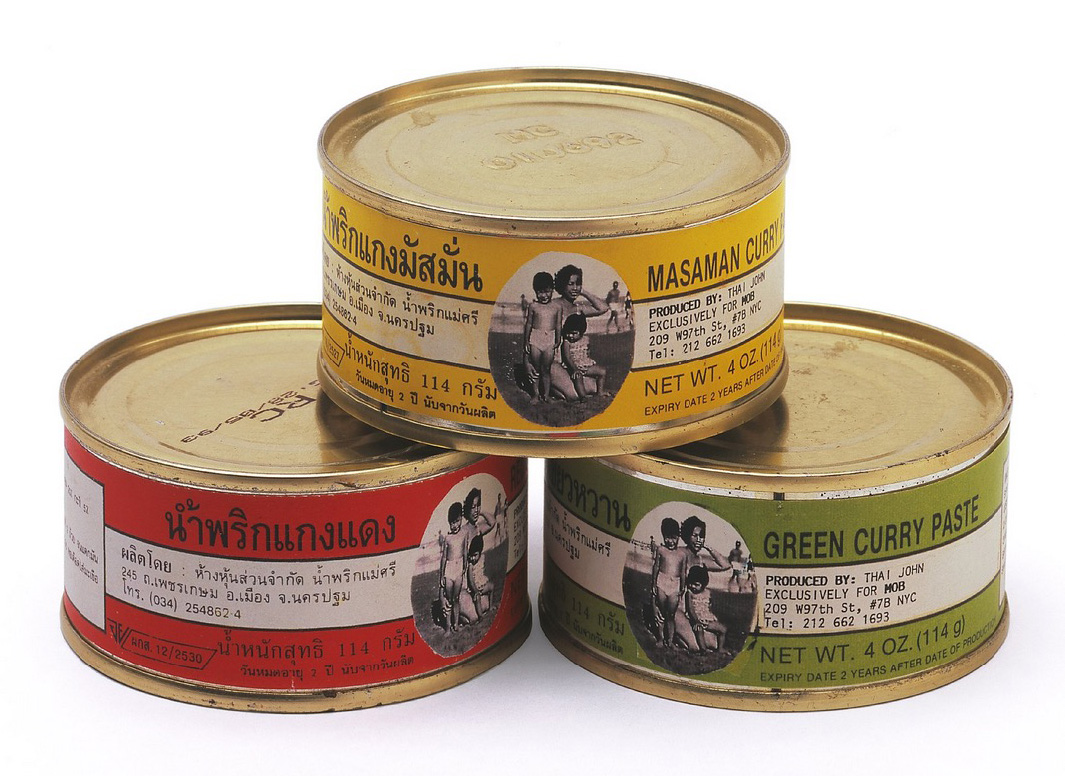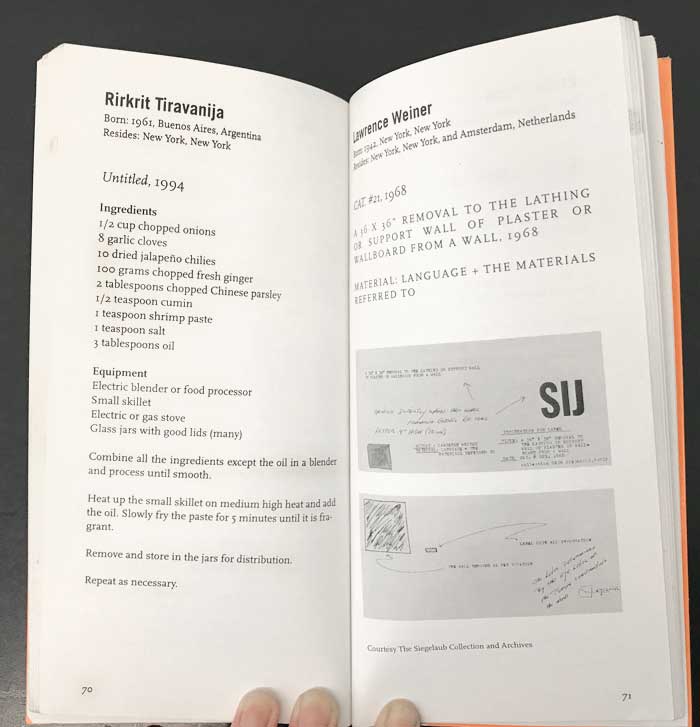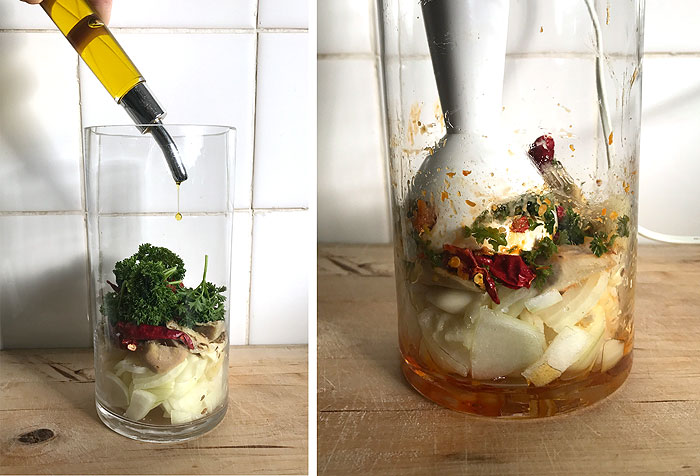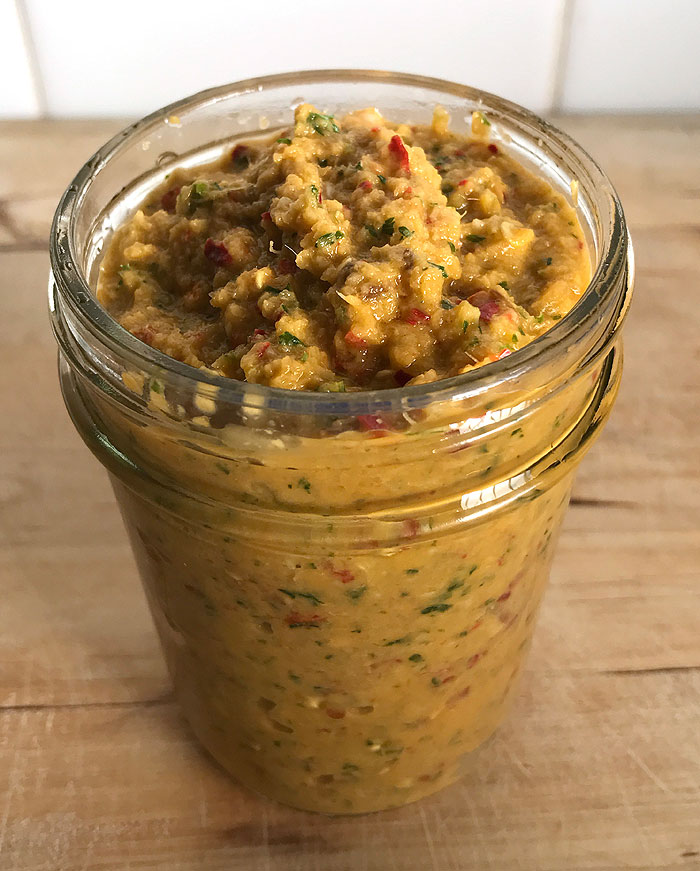Rirkrit Tiravanija was born in Buenos Aires to Thai parents and now lives between Berlin and New York City. He uses food as a tool to facilitate social exchange in his “situations”. Beginning in 1989, he began using cooking as a means to create an art experiences where he cooks and serves meals to visitors. In the work Untitled, 1992 (Red, Yellow, Green Curry), Tiravanija uses commercial canning methods to package his own product. For this work, Tiravanija made three types of curry paste, canned the product and wrapped it in a label bearing a childhood picture of himself, his mother, and sister. The label mimics those of commercial products that include manufacture information, in this case the expiry date of the canned curries in both Thai and English. In this instance, Tiravanija uses cooking as a means to create object-based artwork however his impulse to utilise cooking in his practice emerged from a growing frustration with the “artwork object.” As he explains, “I was like ‘what am I doing? Making another stupid object again?’ Then it suddenly hit me: I should just cook”.(1) He continues his account by clarifying that his aim was not only to blur the boundaries between art and life but also to activate the relationship between food/eating and identity. Hence the personal childhood photograph on the can, an explicit association between foodstuff and the artist’s personal history.

Despite Tiravanija claiming to utilise cooking as a means to circumvent object-based artwork, he has nevertheless made an object multiple. Although the piece is a tangible artwork, Untitled, 1992 (Red, Yellow, Green Curry) is imbued with a sense of temporality, reinforced by the expiration date stamped on the label.Tiravanija similarly conceals the contents of Untitled, 1992 (Red, Yellow, Green Curry) in a can. The purchaser has to trust it holds curry paste, as it is impossible to know the contents without destroying the artwork. Curry paste is a utilitarian entity, it is a foodstuff manufactured for the act of cooking. Even when producing tangible objects, cooking is still the current running throughout Tiravanija’s practice.

As a concept, do it materialised in the early 1990s through a conversation between curator Hans Ulrich Obrist and artists Christian Boltanski and Bertrand Lavier. The idea is propelled by a simple proposition, to “create an instruction that someone else can use to make an artwork”.(2) In the introduction of the compendium, Obrist explains that the premise of do it is to reject “the notion of the original in favour of an open-ended conception of the creation of the work”. Whereas participatory art democratised the artistic process by activating the viewer and encouraging their involvement in the creation of the artwork, instruction art opens that process to be realised at any time or any place outside of the artist’s presence. In 1993, the do it concept was compiled and dispatched internationally as an exhibition concept. Do it establishes a framework for artwork generation that can be interpreted as purposefully vague. Part of the appeal of the project is the variation of the results; as different individuals follow the instructions and interpret the directions; their individual choices will create distinct artworks. The participant is allowed to translate the instructions in ways that are unanticipated by the author, calling on the avant-garde strategy of chance as a method of production. Tiravanija’s instruction for Untitled (1994) takes the form of a recipe, a specific instruction that allows for little interpretation. First, he lists the ingredients and equipment required and the actions necessary to complete the recipe. The name of the dish is not given, however by reading the recipe, it is evident the steps create a spicy paste.
(1) Rirkrit Tiravanija, quoted in Hans Ulrich Obrist, Hans Ulrich Obrist & Rirkrit Tiravanija: The Conversation Series (Conversation (Verlag Der Buchhandlung)). Vol. 20 (Köln: Walther König, 2010), 114-116.
(2) Hans Ulrich Obrist, Do it: the compendium (New York: Independent Curators International, 2013), 16.



2 comments
Julie says:
Sep 10, 2017
How fun is that? To be served food as part of the art experience!
Feasting on Art Project Archive | Megan R. Fizell | Art Historian & Theorist says:
Dec 29, 2021
[…] a similar process (see Futurists – Cubist Vegetable Patch, Alison Knowles – Salad, and Rirkrit Tiravanija – Curry Paste). This project archive includes links to the published excerpts from Feasting on Art, a selected […]